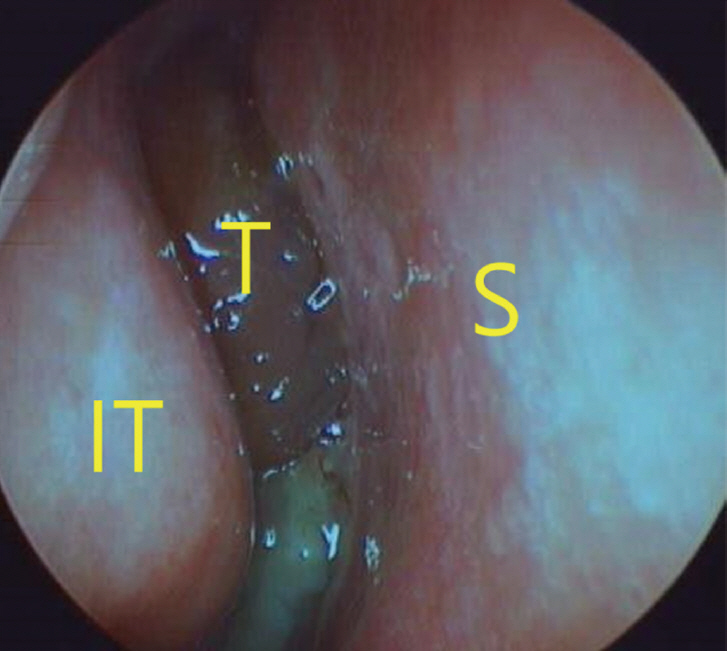Clin Exp Otorhinolaryngol.
2016 Sep;9(3):278-281. 10.21053/ceo.2015.01333.
Concurrent Mucosal Melanoma and Angiofibroma of the Nose
- Affiliations
-
- 1Department of Otorhinolaryngology-Head and Neck Surgery, The Catholic University of Korea College of Medicine, Seoul, Korea. fpsljh@gmail.com
- 2Department of Pathology, The Catholic University of Korea College of Medicine, Seoul, Korea.
- KMID: 2353628
- DOI: http://doi.org/10.21053/ceo.2015.01333
Abstract
- Malignant melanoma rarely develops in the paranasal sinuses, and generally has a poor prognosis. However, mucosal melanoma can masquerade both clinically and histopathologically as a benign lesion, rendering accurate early diagnosis difficult. On the other hand, angiofibroma, a benign tumor, is more easily diagnosed than a mucosal melanoma, because the former exhibits specific histopathological features. No cases of concurrent angiofibroma and mucosal melanoma have been reported to date. We describe such a case below.
Keyword
Figure
Reference
-
1. Medhi P, Biswas M, Das D, Amed S. Cytodiagnosis of mucosal malignant melanoma of nasal cavity: A case report with review of literature. J Cytol. 2012; Jul. 29(3):208–10.
Article2. Mihajlovic M, Vlajkovic S, Jovanovic P, Stefanovic V. Primary mucosal melanomas: a comprehensive review. Int J Clin Exp Pathol. 2012; Oct. 5(8):739–53.3. Mundra RK, Sikdar A. Endoscopic removal of malignant melanoma of the nasal cavity. Indian J Otolaryngol Head Neck Surg. 2005; Oct. 57(4):341–3.
Article4. Rinaldo A, Shaha AR, Patel SG, Ferlito A. Primary mucosal melanoma of the nasal cavity and paranasal sinuses. Acta Otolaryngol. 2001; Dec. 121(8):979–82.
Article5. Mendenhall WM, Amdur RJ, Hinerman RW, Werning JW, Villaret DB, Mendenhall NP. Head and neck mucosal melanoma. Am J Clin Oncol. 2005; Dec. 28(6):626–30.
Article6. Grant-Kels JM, Bason ET, Grin CM. The misdiagnosis of malignant melanoma. J Am Acad Dermatol. 1999; Apr. 40(4):539–48.
Article7. Clifton N, Harrison L, Bradley PJ, Jones NS. Malignant melanoma of nasal cavity and paranasal sinuses: report of 24 patients and literature review. J Laryngol Otol. 2011; May. 125(5):479–85.
Article
- Full Text Links
- Actions
-
Cited
- CITED
-
- Close
- Share
- Similar articles
-
- A Case of Labial Mucosal Melanoma Metastasized to the Lung
- Facial Translocation Approach for Nasopharyngeal Angiofibroma
- Four Cases of Primary Malignant Melanoma of the Nasal Cavity
- Mucosal Malignant Melanomas of the Nasal Cavity and Paranasal Sinuses: Clinical Characteristics and Treatment Outcomes
- Primary Angiofibroma Developed in the Orbit






